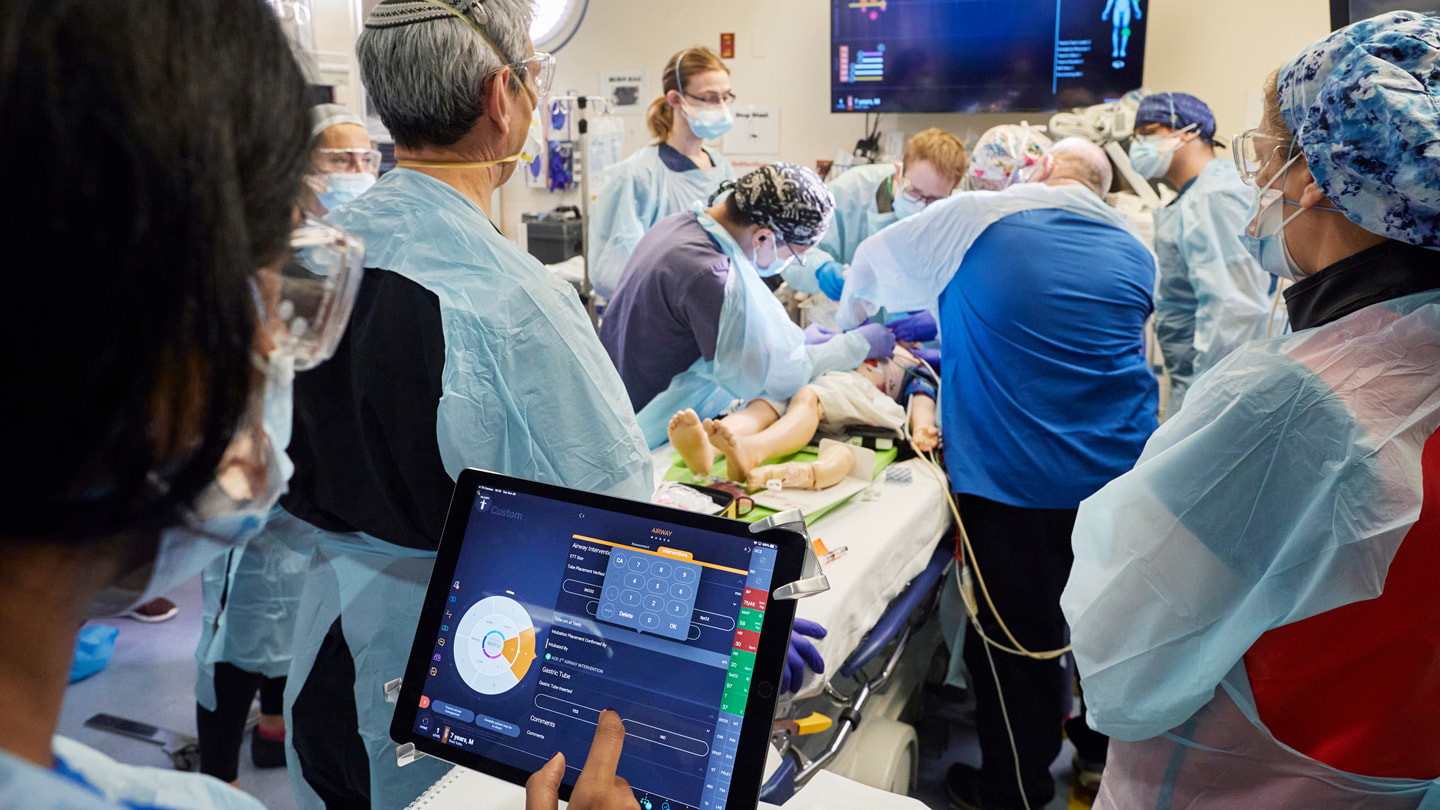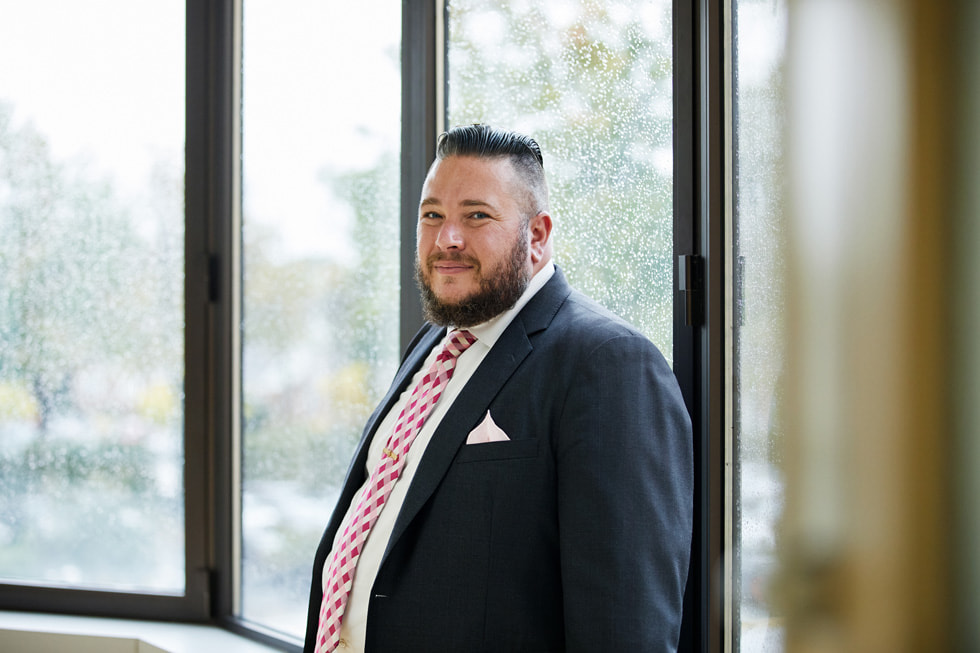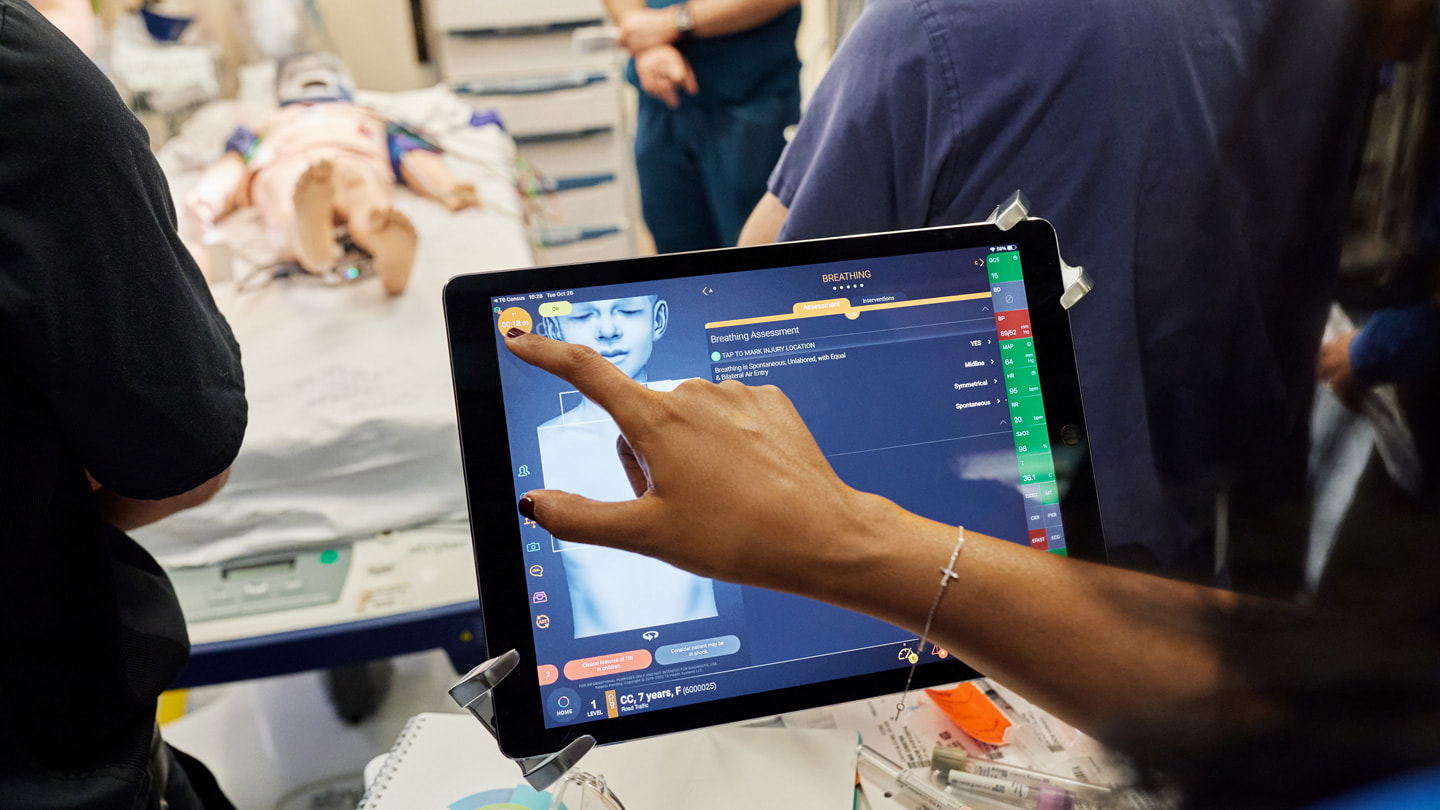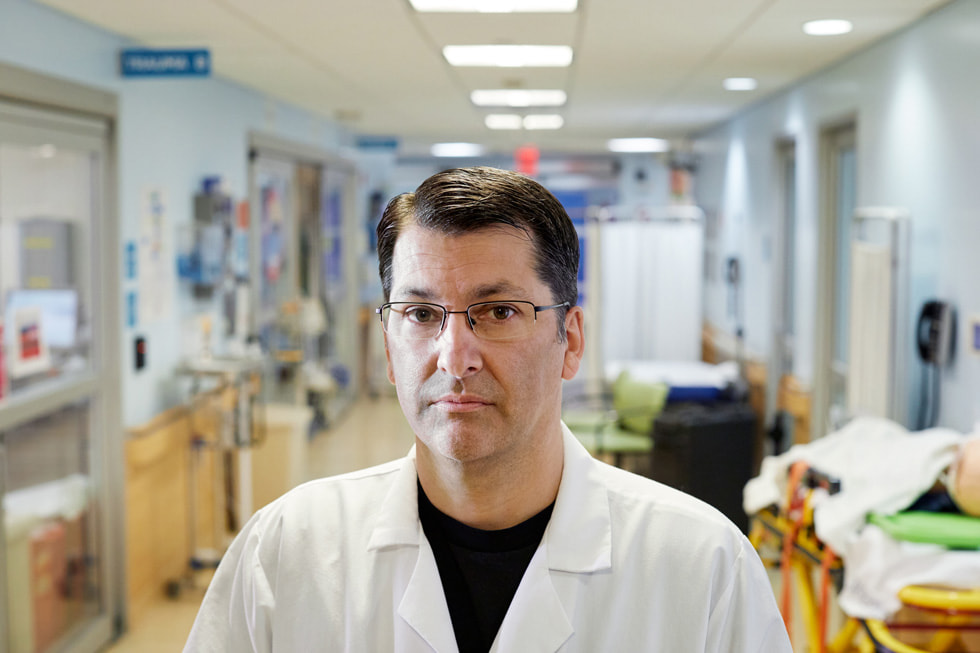FEATURE
November 10, 2021
Drawing from a lifetime of service, veterans use Apple technology to revolutionize trauma medicine
The iPad app T6 is helping healthcare providers harness the power of real-time information
The call comes in to the emergency line at Cohen Children’s Medical Center in New York City: EMS are on the way with a 7-year-old boy who has been struck by a car. A 12-person Level I trauma team is activated to respond.
As the team assembles and prepares for the patient’s arrival, there’s a new tool in their kit. It’s a cutting-edge app called T6 that runs exclusively on iPad and leverages data to give medical professionals real-time feedback as they administer lifesaving trauma care.
Nathan Christopherson is vice president of surgery for Northwell Health, New York State’s largest healthcare provider, and he oversees all of its trauma centers, including Cohen Children’s Medical Center. He’s also a veteran, having served as a combat medic in the Army for more than a decade, and it’s that experience that led him to introduce T6 into Northwell’s emergency care — the first civilian healthcare provider in the US to do so.
“One of the most important parts of trauma care is how a patient moves through a medical system,” says Christopherson. “In the military, that’s going from managing the situation in the field, to transport, to arrival at a combat support hospital, and then onward — and one of the keys to optimizing that journey is the communication of data. We’ve taken those lessons and applied them to the civilian world, and T6 is a big part of helping us with that.”
Trauma surgeon Dr. Morad Hameed is one of T6’s co-founders, and he drew on the rich history of military trauma medicine to inform the app’s development.
T6 allows medical teams to input and analyze patient data in real time through iPad. In a hospital setting, data such as vitals and injury details are entered into the app and displayed on a large screen for the entire trauma team to see, along with standard-of-care guidelines and alerts. In the field, whether that’s in an ambulance or medical helicopter, or if T6 is being used by a military team or medic, the iPad app will allow real-time virtual communication between the person administering care and a trauma team in another location.
In addition to its adoption at Northwell Health, T6 has also been used by the US military at Craig Joint Theater Hospital at Bagram Air Base in Afghanistan and Brooke Army Medical Center in San Antonio.
T6 gets its name from the concept of the “golden hour,” which is the period of time after a traumatic injury where medical intervention will help secure the best outcome. That time frame is commonly thought to be about six hours, based on lessons learned from the battlefield.
“When an unstable patient comes in with traumatic injuries and meets a big, multidisciplinary medical team assembled to treat them, the clock is already ticking,” says Hameed. “That point of intersection is a huge source of rich data if we could capture it. T6 was designed to do just that, in sufficient detail and relevance that we can actually improve our performance on the fly, and that’s never been done in healthcare.”
For example, T6 will trigger an alert to give a patient calcium at specific intervals during the course of a massive blood transfusion because that process depletes calcium, which is essential for healthy cardiac function. T6 alerts and guidelines are continually updated to reflect current best practices so that trauma and other acute care teams are always informed on the latest medical treatment protocols.
“We wanted to transform the existing treatment model and use data in a new and interactive way,” says Igor Muravyov, T6’s co-founder. “Every piece of information that is entered into T6 is immediately analyzed for clinical decision support. We engineered the app so that you can navigate to over 3,000 data input fields within two to three touches, and that kind of intuitive experience is only possible with iPad.”
Apple’s software development kits, including CloudKit, enable T6 to synchronize patient data and decision support across multiple devices.
“T6 runs on Apple exclusively for a lot of reasons: security, reliability, ease of use, power, and portability,” says Muravyov. “With Apple, we knew the quality of the hardware was going to be exceptional, and because T6 is being used in hospitals and in the military, security was paramount for us, and there’s no higher bar than the Apple ecosystem for data security.”
Col. Omar Bholat — a trauma surgeon with Northwell Health — has been in the Army reserves for the last 20 years, deploying on six combat tours. He’s started to receive training on T6 in advance of its launch at the hospital where he practices.
“Information is power, and T6 is a great tool to improve the accuracy of information transmission throughout the continuum of a patient’s care,” says Bholat. “In the military, we’ve learned how critical that is when it comes to moving severely injured patients from the field. T6 is going to help streamline the flow of data from the point of injury to the ICU and everywhere in between — that’s going to be huge for trauma medicine, whether that’s civilian or military.”
The T6 app is already in use at two of Northwell Health’s Level I trauma centers, with a full rollout scheduled by the end of 2022.
“We’re already seeing an increased adherence to trauma guidelines with our teams using the app,” says Christopherson. “The future is to continue leveraging this technology in different parts of patient care — not just Level I trauma centers, but Level IIs and IIIs as well — creating pathways for that data to go from point to point seamlessly. I can also see EMS using it at the scene of accidents to capture photos and videos to help inform care, and at rural hospitals for telemedicine — T6 has the power to do all of that.”
Back in the emergency department at Cohen Children’s Medical Center, all of the members of the trauma team have assembled. That’s when they learn that the patient they’re about to treat isn’t real — it’s part of a simulation event the hospital runs every month to sharpen and streamline their skills. But that doesn’t stop them from responding as if the medical dummy laying on the table in front of them is a boy who has been hit by a car. They enter his vitals and injuries into T6 and watch as the program responds with protocols and alerts. The simulation ends when the team decides the patient needs to be moved to the operating room.
Like so many of the tools Christopherson has brought to bear at Northwell Heath, the simulations trace their roots to his time in the Army.
“I think we can always do better, and in the military, that was the case too — we were always looking at how could we be more effective and save more lives,” says Christopherson. “The application of T6 is part of that. At the end of the day, the most important thing is helping people — that’s what drives me.”
Share article
Media
-
Text of this article
-
Images in this article



